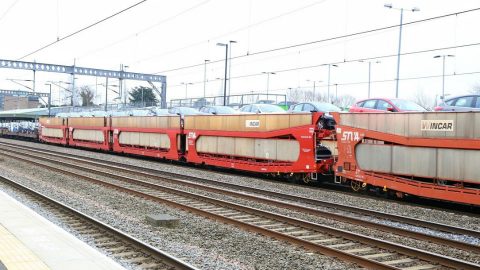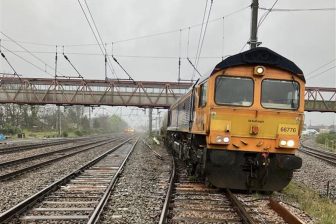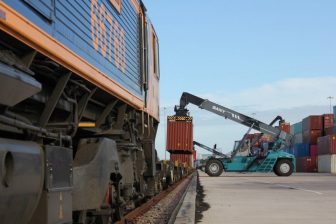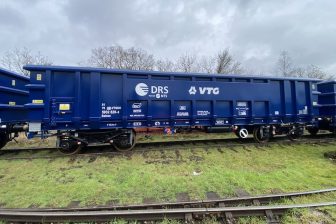
Train loads of Ford cars transported every week across UK
UK operator Direct Rail Services has just announced a contract to move new Ford vehicles across England, starting in February. Just like the automotive industry, and with the environment in mind, they will be using the very latest hybrid technology.
A partnership between rail freight operator DRS, vehicle logistics specialists STVA UK, and Ford Motor Company, will see up to ten trainloads of new vehicles depart weekly from the iconic Dagenham site in Essex, near London. This comes down to 1500 Ford cars transported by train every week.
Engine hub
Ford’s plant, at one time the biggest factory in Europe, remains a major engine manufacturing operation, but is also a vast logistics hub. Ships dock twice daily, at the plant’s own jetty on the River Thames, with vehicles destined for the UK market and beyond. It is from this facility that DRS will be working with automotive transport specialists STVA UK to transport cars between Dagenham and Ford’s rail terminal just outside Liverpool at Garston.
The Carlisle-based rail operator was celebrating the deal with enthusiasm. “The introduction of this new rail service is an exciting addition to the DRS portfolio”, said Chris Connelly, the company’s Chief Operating Officer.
Fully fledged
Originally conceived as a wholly owned subsidiary of the UK’s Nuclear Decommissioning Authority, DRS has diversified into a fully-fledged operation in the rail freight sector. Connelly says this contract represents the ambition of the £80 million a year turnover business and the 480 staff. “This reaffirms the DRS ambition to introduce new business to complement our core nuclear mission”, he said.
Neither Dagenham nor Garston have electrified rail layouts, but both sites are close to wired-up main lines. A crucial part of the operation will be the use of bi-mode, Stadler-designed class 88 electro-diesel locomotives, built specifically for DRS. The ability of the locomotives to run ‘last mile’ under their own power has made the project all the more attractive.
“It is important that we are at the forefront of technology,” Chris Connolly told the BBC at the time of locomotives delivery in 2017. Developed from the Euro-Dual model, the locomotives were built at what was the Vossloh España factory in Valencia, coincidentally just on the other side of town from the Ford assembly plant.
From Spain
From Dagenham, sea-borne deliveries from Spain and elsewhere will be transported on behalf of STVA UK, the well-known specialists in the field of automotive logistics. “We look forward to working closely with STVA UK and implementing this new service which will mark an exciting start of our relationship,” added Chris Connolly.
From their UK HQ in Bristol, Simon Willard, STVA UK General Manager, was equally optimistic.“We are delighted to be working with DRS and embarking on what we hope will be a long-term partnership,” he said. “I would like to thank all of the DRS team for their hard work and commitment to the bid process and for their enthusiasm to work with us.”
Electric vehicles
STVA’s single deck and low-floor double deck rolling stock has been a familiar sight on the UK network for many years. Although the automotive industry has seen cyclical change over that time, the signing of this contract represents a further upturn, and modal shift towards rail freight.
That the loads may well consist of a greater proportion of hybrid and electric vehicles in future only reflected the changing nature of the sector, and the economy at large. As Chris Connolly said, it is important to be at the forefront. The Dagenham – Garston flows are scheduled to begin at the end of February with between six and eight trains per week, with capacity for up to ten trips. Dagenham’s evolution continues, with the help of rail-borne partners.




